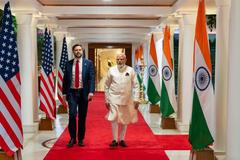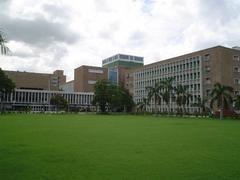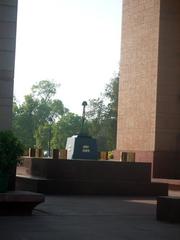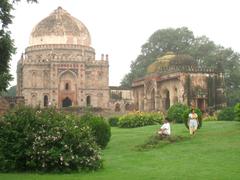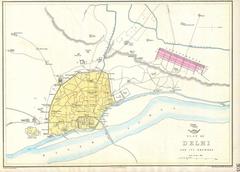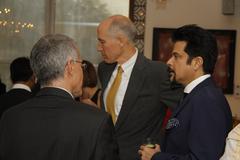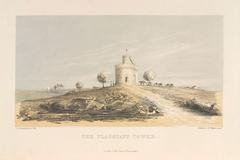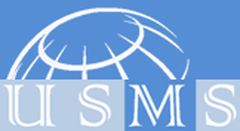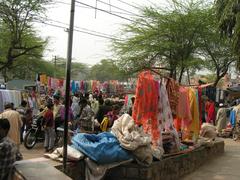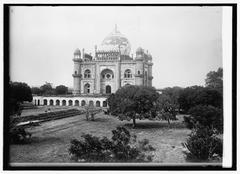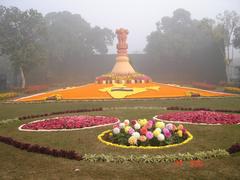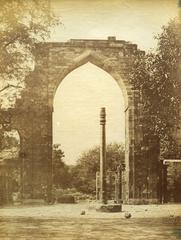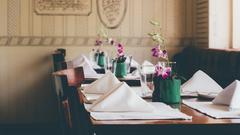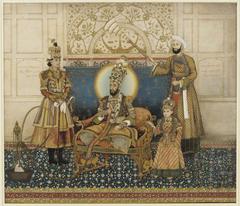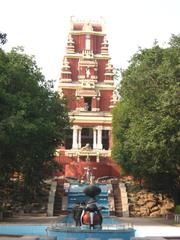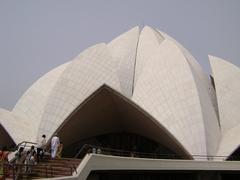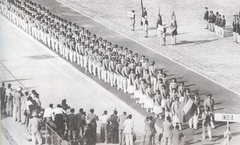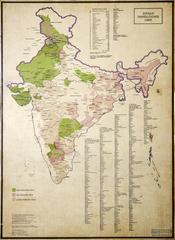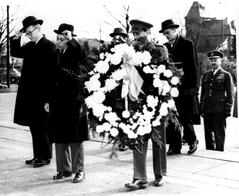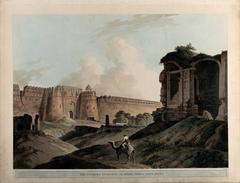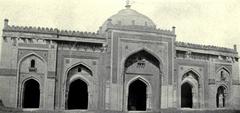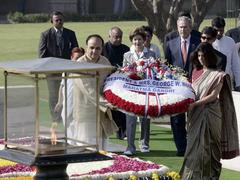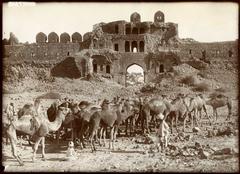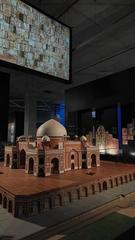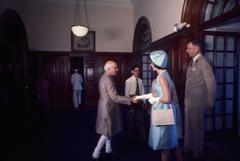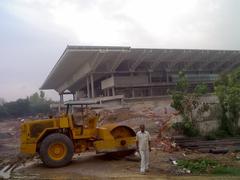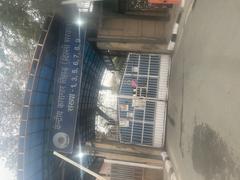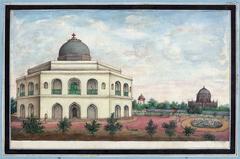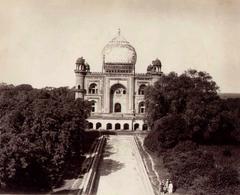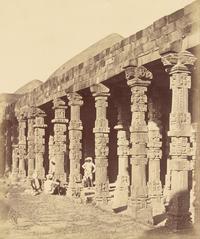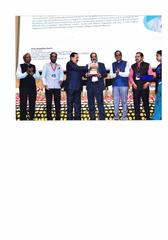Fatehpuri Masjid Visiting Hours, Tickets, and Historical Sites in New Delhi
Date: 23/07/2024
Introduction
Fatehpuri Masjid, located at the western end of Chandni Chowk in Old Delhi, is an architectural and historical marvel that stands as a testament to the grandeur of Mughal architecture. Built in 1650 by Fatehpuri Begum, one of the wives of the Mughal Emperor Shah Jahan, the mosque is a significant part of India’s cultural and religious heritage (Cultural India). The mosque’s unique architectural features, including its red sandstone structure, intricate carvings, and spacious courtyard, reflect the artistic achievements of the Mughal era (Architectural Digest). Over the centuries, Fatehpuri Masjid has witnessed numerous historical events, from the Indian Rebellion of 1857 to its restoration by the British in 1877 (Delhi Tourism). Today, it continues to serve as a vital religious site and a cultural landmark in Delhi, attracting worshippers and tourists alike. This comprehensive guide aims to provide detailed information on the mosque’s history, architectural significance, visitor tips, and nearby attractions, ensuring a memorable visit for all.
Table of Contents
- [Introduction](#introductionintroduction)
- [Foundation and Construction](#foundation-and-constructionfoundation-and-construction)
- [Architectural Significance](#architectural-significancearchitectural-significance)
- [The Prayer Hall](#the-prayer-hallthe-prayer-hall)
- [The Courtyard](#the-courtyardthe-courtyard)
- [Minarets and Domes](#minarets-and-domesminarets-and-domes)
- [Decorative Elements](#decorative-elementsdecorative-elements)
- [Historical Events](#historical-eventshistorical-events)
- [Restoration and Preservation](#restoration-and-preservationrestoration-and-preservation)
- [Cultural and Religious Importance](#cultural-and-religious-importancecultural-and-religious-importance)
- [Modern-Day Relevance](#modern-day-relevancemodern-day-relevance)
- [Visiting Information](#visiting-informationvisiting-information)
- [Visiting Hours](#visiting-hoursvisiting-hours)
- [Tickets](#ticketstickets)
- [Dress Code](#dress-codedress-code)
- [Accessibility](#accessibilityaccessibility)
- [Travel Tips](#travel-tipstravel-tips)
- [Best Time to Visit](#best-time-to-visitbest-time-to-visit)
- [Photography](#photographyphotography)
- [Local Guides](#local-guideslocal-guides)
- [Nearby Attractions](#nearby-attractionsnearby-attractions)
- [Red Fort](#red-fortred-fort)
- [Jama Masjid](#jama-masjidjama-masjid)
- [Chandni Chowk Market](#chandni-chowk-marketchandni-chowk-market)
- [FAQ](#faqfaq)
- [What are the visiting hours for Fatehpuri Masjid?](#what-are-the-visiting-hours-for-fatehpuri-masjidwhat-are-the-visiting-hours-for-fatehpuri-masjid)
- [Is there an entry fee for Fatehpuri Masjid?](#is-there-an-entry-fee-for-fatehpuri-masjidis-there-an-entry-fee-for-fatehpuri-masjid)
- [Is Fatehpuri Masjid accessible by public transport?](#is-fatehpuri-masjid-accessible-by-public-transportis-fatehpuri-masjid-accessible-by-public-transport)
- [Conclusion](#conclusionconclusion)
- [References](#referencesreferences)
Foundation and Construction
Fatehpuri Masjid, located at the western end of Chandni Chowk in Old Delhi, is a significant historical and religious site. The mosque was built in 1650 by Fatehpuri Begum, one of the wives of Mughal Emperor Shah Jahan, who is also known for commissioning the Taj Mahal. The mosque’s construction was part of Shah Jahan’s broader urban development plan for Shahjahanabad, the then-new capital city of the Mughal Empire. The mosque’s architecture is a testament to the Mughal style, characterized by its red sandstone structure and intricate carvings.
Architectural Significance
The mosque’s design reflects the grandeur of Mughal architecture. The main prayer hall is adorned with high arches and a large central dome flanked by two smaller domes. The mosque’s courtyard is spacious, allowing for large congregations, especially during significant Islamic festivals like Eid. The mosque’s minarets, though not as tall as those of the Jama Masjid, are notable for their elegant design and serve as a visual anchor in the bustling market area of Chandni Chowk.
The Prayer Hall
The prayer hall is the focal point of the mosque, designed to accommodate a large number of worshippers. The hall is adorned with arches and pillars, creating a sense of grandeur and openness. The central dome, which rises above the prayer hall, is a significant architectural feature. It is supported by a series of arches and is decorated with intricate patterns and calligraphy from the Quran. The use of red sandstone and white marble in the dome’s construction creates a striking visual contrast (Architectural Digest).
The Courtyard
The mosque’s courtyard is another essential architectural element, designed to accommodate overflow worshippers during significant religious events. The courtyard is spacious and open, surrounded by a colonnade of arches. The central feature of the courtyard is a large ablution tank, used by worshippers to perform the ritual washing before prayers. The tank is made of white marble and is an example of the Mughal emphasis on cleanliness and purity in religious practices.
Minarets and Domes
The mosque features two minarets, which are relatively short compared to other Mughal structures. These minarets are primarily decorative and add to the mosque’s aesthetic appeal. The minarets are adorned with intricate carvings and are topped with small domes, reflecting the Mughal architectural style. The central dome of the mosque is the most prominent feature, symbolizing the heavens and the universe in Islamic architecture. The dome’s interior is decorated with floral patterns and calligraphy, creating a serene and spiritual atmosphere for worshippers (Cultural India).
Decorative Elements
The decorative elements of Fatehpuri Masjid are a testament to the artisans’ skills during the Mughal period. The mosque’s facade is adorned with intricate carvings and calligraphy, featuring verses from the Quran. The use of geometric patterns and floral motifs is a hallmark of Mughal architecture, reflecting the Islamic emphasis on aniconism. The mosque’s interior is equally ornate, with detailed frescoes and stucco work adorning the walls and ceilings. The mihrab, or prayer niche, is particularly noteworthy, featuring intricate tile work and calligraphy that directs worshippers towards Mecca (Tour My India).
Historical Events
Fatehpuri Masjid has witnessed several historical events that have shaped its legacy. During the Indian Rebellion of 1857, the mosque was a focal point of resistance against British colonial forces. After the rebellion was suppressed, the British confiscated the mosque and auctioned it off to a Hindu merchant, Lala Chunnamal, as a punitive measure. This act was part of the broader British strategy to dismantle Mughal influence in the region.
Restoration and Preservation
In 1877, the mosque was returned to the Muslim community by the British government as a gesture of goodwill during the Delhi Durbar, a grand assembly to mark the proclamation of Queen Victoria as the Empress of India. The restoration of the mosque was a significant event, symbolizing the resilience and enduring presence of the Muslim community in Delhi. Over the years, various efforts have been made to preserve the mosque’s structure and maintain its historical integrity. The Archaeological Survey of India (ASI) has played a crucial role in these restoration efforts, ensuring that the mosque remains a significant cultural and religious landmark in Delhi (ASI).
Cultural and Religious Importance
Fatehpuri Masjid continues to be an important religious site for Muslims in Delhi. It serves as a center for daily prayers, Friday congregations, and special religious events. The mosque’s location in the heart of Old Delhi makes it a vital part of the community’s cultural and social fabric. The mosque also plays a role in interfaith dialogue and community activities, reflecting its historical significance as a place of worship and social gathering.
Modern-Day Relevance
Today, Fatehpuri Masjid stands as a symbol of Delhi’s rich historical and cultural heritage. It attracts not only worshippers but also tourists and history enthusiasts who are keen to explore the architectural marvels of the Mughal era. The mosque’s management has undertaken several initiatives to ensure its upkeep and to educate visitors about its historical and cultural significance.
Visiting Information
Visiting Hours
Fatehpuri Masjid is open to visitors from 6:00 AM to 8:00 PM daily. However, it is advisable to check the timings before planning your visit.
Tickets
There is no entry fee for visiting Fatehpuri Masjid. Donations are welcome to support the upkeep of the mosque.
Dress Code
Modest attire is recommended. Visitors are required to cover their heads before entering the mosque.
Accessibility
The mosque is accessible by foot or cycle rickshaw from Chandni Chowk Metro Station. It is also well-connected by local buses and taxis.
Travel Tips
Best Time to Visit
The best time to visit Fatehpuri Masjid is during the cooler months from October to March. During this period, the weather in New Delhi is more pleasant, making it easier to explore the mosque and its surroundings. Avoid visiting during the peak summer months (April to June) when temperatures can soar above 40°C (104°F).
Photography
Photography is generally allowed in the mosque, but it is always best to ask for permission, especially if you are taking pictures of people. Be respectful of worshippers and avoid using flash photography inside the prayer hall. For more detailed shots, consider visiting during less busy times.
Local Guides
While there are no official guided tours provided by the mosque, several local tour operators offer guided tours of Old Delhi, which include a visit to Fatehpuri Masjid. These tours can provide valuable historical and cultural context, enhancing your understanding and appreciation of the mosque. Check out Viator or GetYourGuide for tour options.
Nearby Attractions
While visiting Fatehpuri Masjid, you can also explore other nearby attractions:
Red Fort
A UNESCO World Heritage Site, located just a short distance from the mosque (UNESCO).
Jama Masjid
Another architectural marvel of the Mughal era, situated close to Fatehpuri Masjid (Delhi Tourism).
Chandni Chowk Market
A bustling market area known for its street food, shopping, and historical landmarks (Delhi Tourism).
FAQ
What are the visiting hours for Fatehpuri Masjid?
The mosque is open daily from 6:00 AM to 8:00 PM.
Is there an entry fee for Fatehpuri Masjid?
No, there is no entry fee.
Is Fatehpuri Masjid accessible by public transport?
Yes, it is easily accessible by metro, bus, and taxi.
Conclusion
Fatehpuri Masjid is not just a historical monument but a living testament to Delhi’s rich cultural and religious heritage. The mosque’s architectural splendor, coupled with its historical significance, makes it a must-visit destination for anyone interested in exploring the Mughal era’s grandeur. From its foundation by Fatehpuri Begum in 1650 to its role in significant historical events and its ongoing cultural importance, Fatehpuri Masjid offers a unique glimpse into the past. Visiting this mosque provides an opportunity to appreciate the intricate craftsmanship of Mughal architecture and the enduring spirit of the community it serves. Whether you are a history enthusiast, an architecture aficionado, or a spiritual seeker, a visit to Fatehpuri Masjid will undoubtedly enrich your understanding of Delhi’s vibrant history (Incredible India).
References
- Cultural India, 2024
- Architectural Digest, 2024
- Delhi Tourism, 2024
- Incredible India, 2024
- Tour My India, 2024
- ASI, 2024
